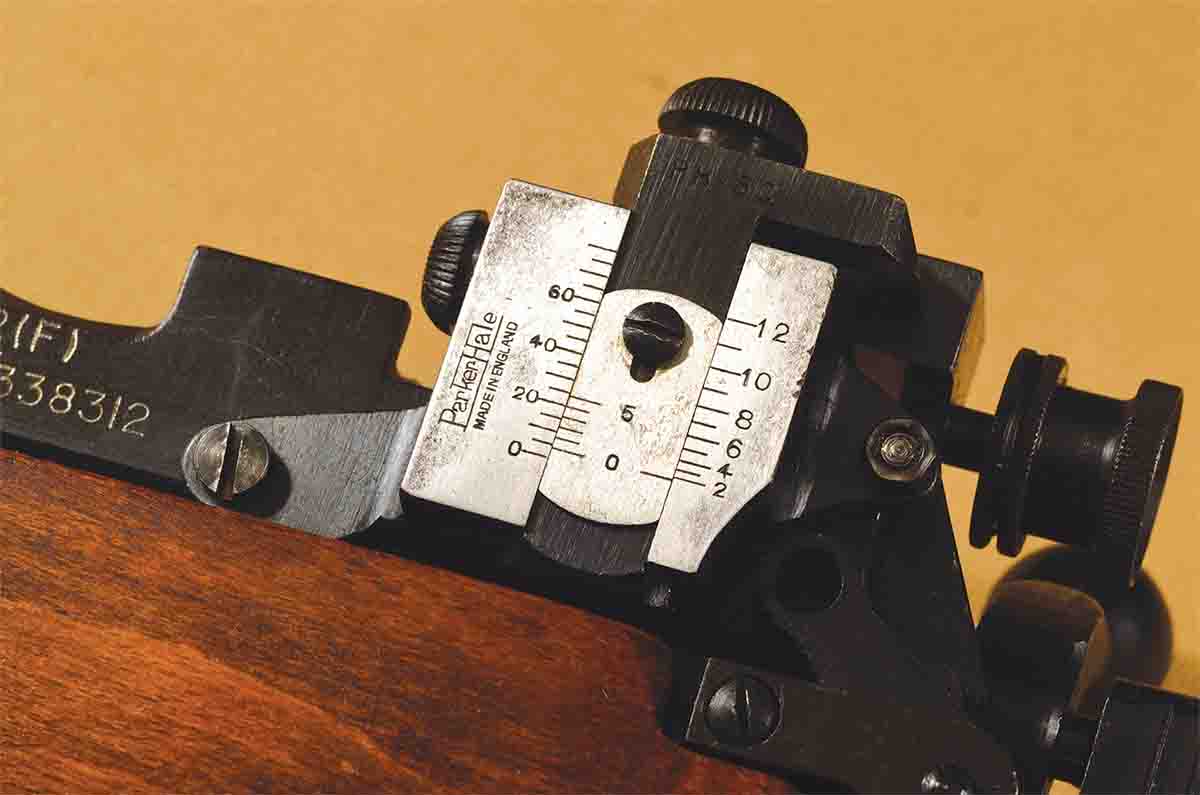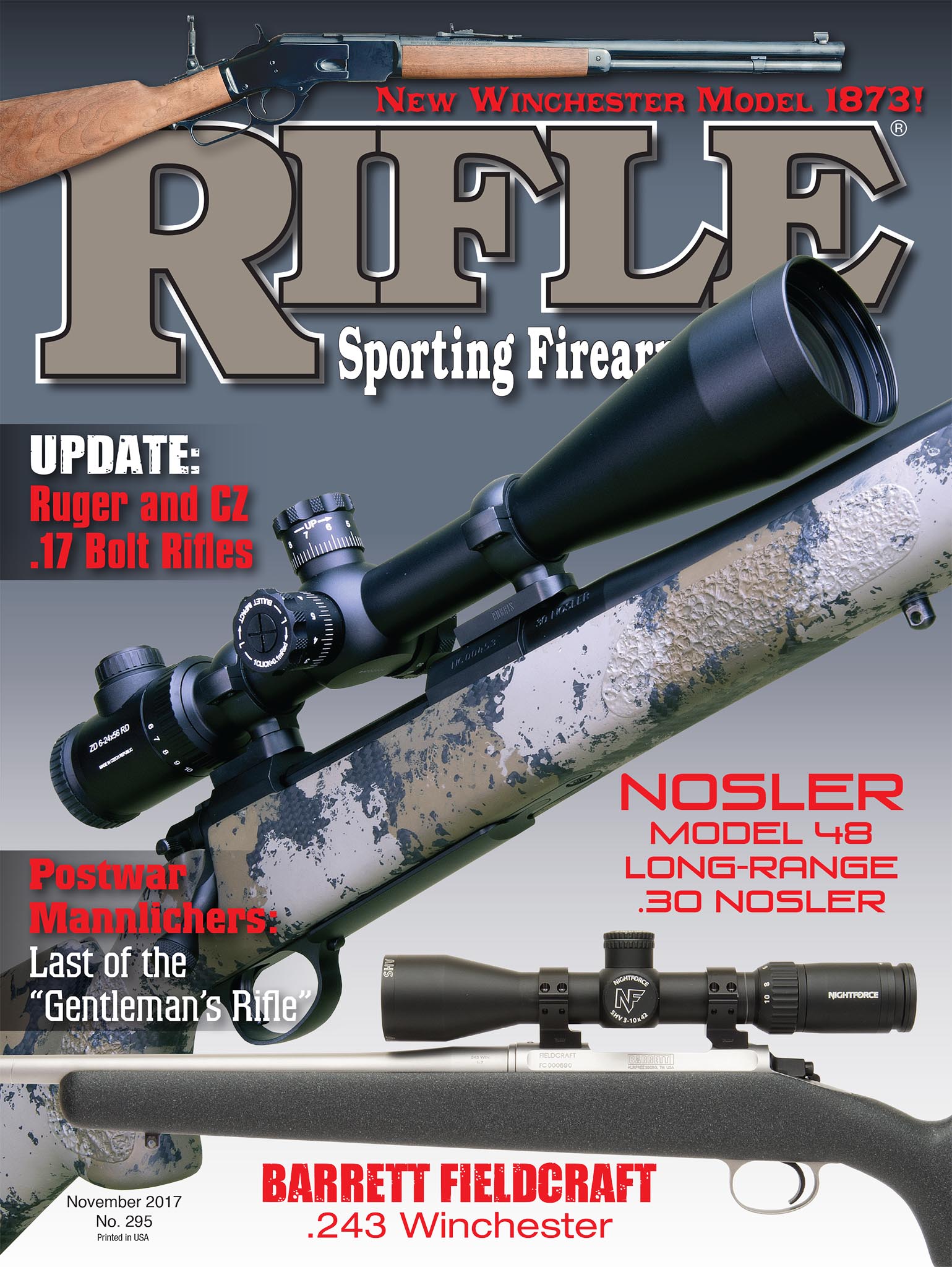Walnut Hill
The Longest Ever Shot
column By: Terry Wieland | November, 17
Canadian snipers have regained the crown for the longest confirmed shot in military history: 3,871 yards (3,540 meters) against an Islamic insurgent in Iraq. The phenomenal shot occurred around early June during a Daesh (Islamic State) attack on Iraqi security forces.
The shot eclipsed the previous record of 2,707 yards (2,475 meters), set by British sniper Craig Harrison in 2009, against the Taliban in Afghanistan. As the scorecard now stands, Canada holds first, third and fourth places, all time, while the Brits have second and the Americans fifth.
For security reasons, Canada’s defense department would not reveal the name of the sniper or his partner, nor say anything beyond the fact that they are members of an elite operational unit called Joint Task Force Two (JTF2) acting in a support role with Iraqi forces. The shot was independently confirmed, and the Globe & Mail quoted a defense-department source as saying “[We have] hard data on this. It isn’t an opinion. It isn’t an approximation. There was a second location with eyes on with all the right equipment to capture exactly what the shot was.”
For the hardware minded, the sniper was using a McMillan TAC-50 rifle and fired from a high-rise building as insurgents prepared to mount their attack. The shot – not surprisingly – disrupted things.
The Canadian government is close-mouthed about all special forces within the military, not least because it fears criticism from those who believe we should all turn the other cheek, or that by carrying out such anti-terrorist activities, it is actually provoking more. However, most are part of a larger unit called the Canadian Special Operations Regiment, which has teams involved in training Kurdish forces. The sniper was a member of one of those teams.
The Globe & Mail was at some pains to explain to its readers just how difficult such a shot would be, the calculations involved, the teamwork and the extent of the training to acquire such skills. The reporter also seemed somewhat self-conscious, however, about cheering the successful shot as if it were the winning goal in an Olympic hockey game. Personally, I don’t share the doubts.

The Canadian army has a long history of successful sniping in wartime, essentially beginning in 1915, when the first Canadian troops arrived on the western front. That story is told in fascinating detail by Herbert W. McBride, an American who enlisted in the Canadian army in 1914, fought in France and Belgium until the U.S. entered the war, and was then seconded to help train and prepare American troops for the trenches. McBride tells the story in his book A Rifleman Went To War.
Of course, sniping in the trenches was a far cry from what takes place now in Afghanistan or Iraq. In those days, snipers were lone wolves, and it was a game of cat-and-mouse more than a contest at great distance. With enemy trenches only a few yards apart in places, 200 yards was a pretty long shot. They were also working mostly with standard-issue military rifles. Canada’s rifle in the first 18 months of the war was the Ross. It had its failings, but it was an excellent target rifle, and hence, good for sniping. Even after it was withdrawn from general service in mid-1916, specialists like McBride hung onto theirs, the better to pursue their deadly avocation.
Unlike the British Army recruits, most of whom had never held a rifle in their lives, Canadian volunteers were mostly farmers, hunters and trappers. They took to the demands of military life with little problem. This carried over, 20 years later, when the world went to war again. In 1939, the Canadian army started out with Lee-Enfields, and the Canadian arsenal at Long Branch, just outside Toronto, produced some of the best No. 4, Mk I rifles in that conflict. One of the Long Branch models was a dedicated sniper rifle built to high standards of accuracy, fitted with a scope and all the other accoutrements and transported in a special shipping crate. Today those rifles, complete, sell for $5,000 or more – if you can find one.
In 1955, the Lee-Enfield was replaced by a Canadian variation of the semiautomatic FN-FAL known as the FN C1. There was also an FN C2 model with a long, heavy barrel and integral bipod, capable of full-automatic fire. It replaced the Bren as the section automatic weapon.
The FN C1’s reticle sight was adjustable out to 600 yards, but that is obviously inadequate for longer shots. This was the point where Canada largely abandoned the use of standard rifles for sniping, in keeping with most of the world’s armies. No more would specialists be issued an accurized version of what everyone else was carrying. Instead, their equipment, like their training, became specialized. The scoped sniper-model Lee-Enfield No. 4, Mk I, a proven quantity as a long-range rifle, continued in use until a suitable alternative was found. It was replaced in the late 1960s by a Parker-Hale bolt-action rifle.
Parker-Hale was a legendary name in Canadian shooting circles, going back to the early twentieth century. The long-range matches at Bisley and Connaught (near Ottawa) would not have been possible without them. They made the finest match receiver sights for the various Lee-Enfield models, as well as a range of target equipment. Parker-Hale also made a living through the 1950s marketing army-surplus Lee-Enfields of various models and marks, and in various degrees of “sporterization.” The Parker-Hale name on a Lee-Enfield hunting rifle from Canadian Tire (as we lusted after in the 1950s and ’60s) was a guarantee of quality and accuracy.
The sniper rifle supplied to the Canadian army was based on Parker-Hale’s M82, which in turn was built on a Mauser ’98 action. Parker-Hale did not manufacture these actions; instead, they were obtained from different sources, including the Spanish Santa Barbara. Parker-Hale rifles imported to the U.S. had model designations – the Model 81 Classic, Model 1200, Model 1100 Lightweight, and so on. I owned a Lightweight 6.5x55, with which I hunted in the late 1980s.
Good as it was, however, the Parker-Hale was still an old-style bolt action in conventional calibers. After 2000, it was replaced in Canadian service with a mid- range (up to 1,312 yards) .338 Lapua rifle, and by the McMillan TAC-50, for the decidedly unconventional .50 BMG cartridge. According to what scanty and unconfirmed sources are available, it was fitted first with a Leupold scope, later replaced by a Schmidt & Bender 5-25x.
This is the rifle with which the unidentified Canadian sniper made the 3,871-yard shot, as well as those made by MCpl Rob Furlong (2,657 yards) in 2002 and MCpl Arron Perry (2,526 yards) a few weeks before. Both occurred in Afghanistan. Perry’s shot broke the record set in Vietnam in 1967 by American Carlos Hathcock. Both Furlong and Perry were members of Princess Patricia’s Canadian Light Infantry (PPCLI), one of the most famous regiments in the Canadian army.
After the 3,871-yard shot, a Canadian army spokesman made the somewhat rash statement that, since it bettered the previous record by 1,165 yards, it was a record that might never be broken. I wouldn’t bet on it.


